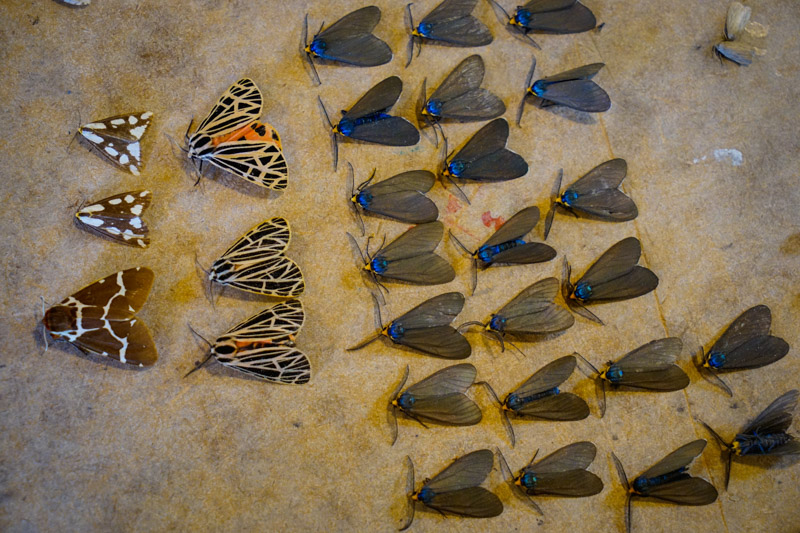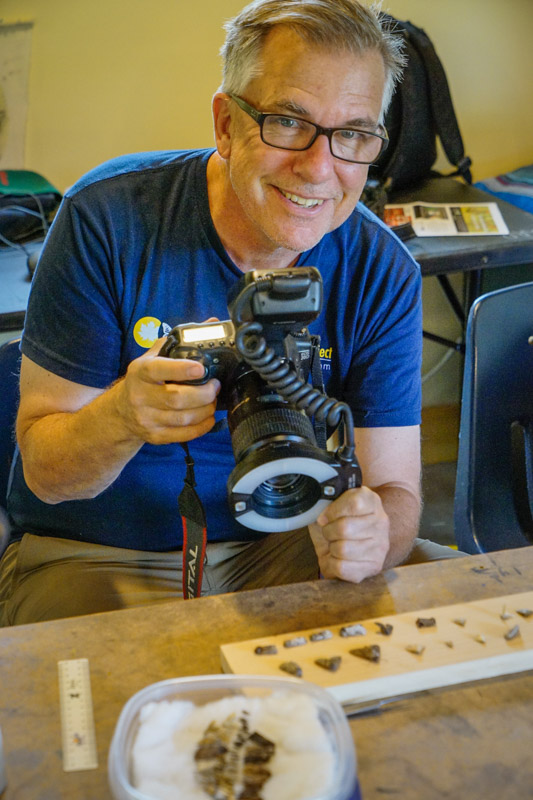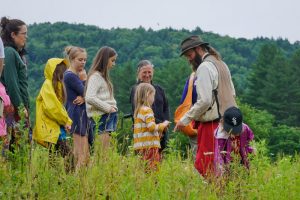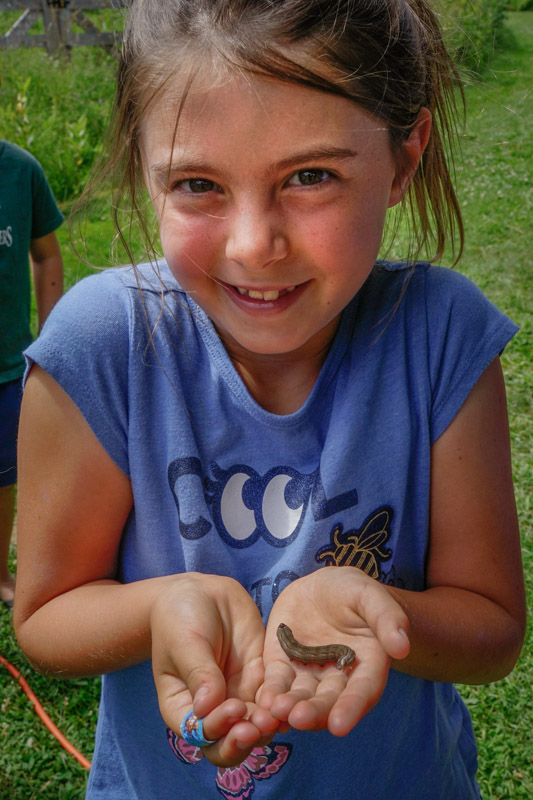Montpelier BioBlitz – The Results!

After two months of dissecting micro-moths, mailing vials of plant bits, and convening experts to hem and haw over stranger specimens, we bring you the exciting results of the Montpelier BioBlitz 2018. We knew there would be new species for our city, county, and maybe even state, but never did we expect such a diversity and significance of the species uncovered by the 90 biologists who scoured Montpelier's natural areas for its weird, wild, and wonderful residents. For the complete, interactive results, see the big orange button below.
Right under our nose...
Discoveries await in even the most common and unexpected places. Botanists Brett Engstrom, Aaron Marcus, and Jerry Jenkins together discovered and confirmed Vermont's first record of Eastern Narrowleaf Sedge (Carex amphibola) in a derelict field abutting the Winooski River. Absent from New Hampshire and Quebec, and exceedingly rare in Maine and Ontario, this easily-overlooked sedge grows in riparian forests, avoiding detection by all but the handful of experts versed in parsing out the many hundreds of grass species native to the Northeast.
Non-natives, courtesy of the Winooski...
Not too far from that celebrated sedge, botanists also discovered the less-exciting Washington County first-records of Water Chickweed (Myosoton aquaticum), and Narrow-leaved everlasting pea (Lathyrus sylvestris). Both of these species are European natives, whose seeds were likely transported via the Winooski and deposited across the floodplain during regular spring floods. Riverside forests and fields are often early strongholds of invasive plants. Introduced plants tend to be adapted to growing in highly-disturbed habitats like roadcuts and riverbanks. And the rivers supply an ever-refreshing seed source by depositing materials carried downstream. Our familiar Japanese Knotweed showcases this process all too well.
Speaking of non-natives...
Botanists Matt Peters and Gus Goodwin encountered what appears to be the United State's very first record of the Dead-nettle Leaf Beetle (Chrysolina fastuosa). This European native dines exclusively on false-nettle (Galeopsis sp. a.k.a. dead-nettle) back home. Galeopsis has recently flourished as an invader along our floodplains throughout the Northeast. Part of its success in the New World may be because it gave its special predator the slip upon arrival in the U.S. With such a robust Galeopsis population in Vermont now, it was only a matter of time before the Dead-nettle Leaf Beetle showed up. Somewhere, a very lucky beetle hopped out of a contaminated horticultural shipment, and into a veritable paradise of its host plant.
The Capital City's new bog...
It's one thing to find a new record of a tiny, obscure moth or beetle. There are only so many micromoth or wood-boring beetle experts out there. These folks tend to leave a wake of regional records wherever their biologial explorations take them.
A two-acre bog (or fen, technically-- more on that later), is a much harder thing to hide in a place like Montpelier. As data rolled in at the BioBlitz headquarters, biologists of very diverse expertise triangulated on something quite unexpected. Laura Gaudette reported Montpelier's first Elfin Skimmer (Nannothemis bella), a thumbnail-sized dragonfly found only in boggy wetlands. Soon after, Everett Marshall shared news of a carnivorous Round-leaved Sundew (Drosera rotundifolia) in the same place.
Bogs and fens are spongy peatlands dominated by sphagnum moss and a suite of specialized plants and animals found nowhere else in nature. These communities exist where water drainage is extremely slow or non-existant. The stagnant, standing water persists year-round above the soil, creating an unusual environment of little-to-no oxygen exchange. In bogs, the naturally-acidic rainfall yields a very acidic water column. Fens, conversely, are fed by more alkaline groundwater. The topographic conditions allowing for this strange habitat are quite rare, and are highly sought after by botanists because of this rarity.
Our newly-discovered fen was discovered over an expanse of concrete that was abandoned and naturally revegetated over several decades. Groundwater emerging from nearby springs flows slowly over the buried concrete, and sits stagnant atop the impervious material, providing the rare, stagnant, low-oxygen conditions required for things like peat moss and carnivorous sundews. The BioBlitz organizers, including the Montpelier Conservation Commission, are determining how to conserve this rare yet artificial site.
Where have the bats gone...
VT Fish and Wildlife Biologist Alyssa Bennett and her field crew used audio detection equipment to document the high-frequency echolocation sounds of several bat species over the North Branch, including two records of the now federally endangered Little Brown Bat (Myotis lucifugus). Since the arrival ten years ago of the White-nose Syndrome fungus in hibernacula caves across New England, our cave-dwelling bat species have plummeted at a bewildering rate. Many hibernation colonies that once held 10,000 overwintering bats now comprise less than 100 individuals. Consequently, our backyards that were once filled with bats hawking insects in the moonlight are now almost entirely absent of many of these nighttime insectivores. Of Vermont's nine species of bats, five are now federally and/or state endangered. The BioBlitz community was relieved to learn that Montpelier appears to be a small summer stronghold for this imperiled species.
Thank you once again to all of our sponsors of this one-a-decade jamboree for nature! See you in 2028.

Taxonomic Survey Results
4,645 Total observations
1,539 Total Species
799 Species not found in 2008 BioBlitz
503 New Species for Montpelier
268 New Species for Washington County
147 Tentatively new species for Vermont
547 Plant Species
685 Insect Species
107 Fungi and Lichen Species
81 Bird Species
26 Mammal Species

Top Observers
1st place: Erika Mitchell
(275 species)
2nd place: Hugh McGuinness
(242 species)
3rd place: Jason Crockwell
(162 species)

Public Participation
Public Attendance: 500
Biologists: 90
Public events: 62
Sponsoring Organizations: 24
Collaborating Organizations: 48


